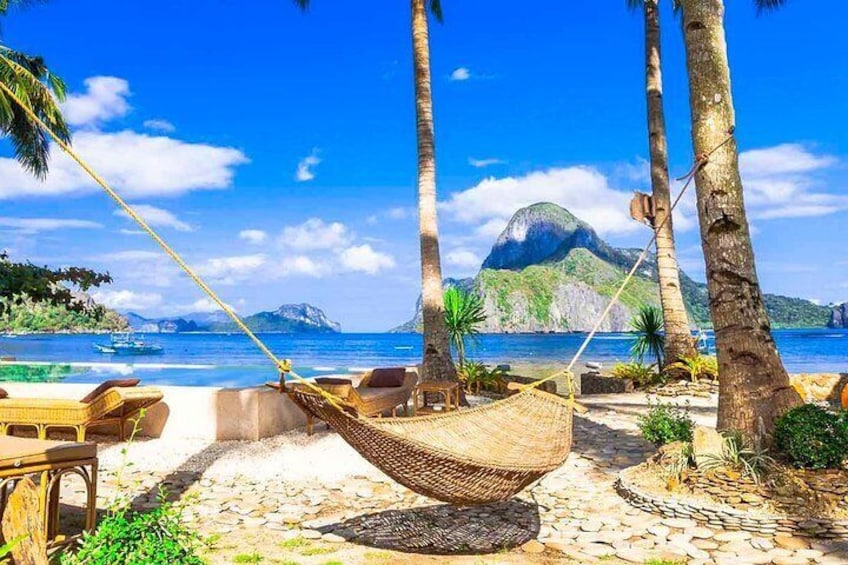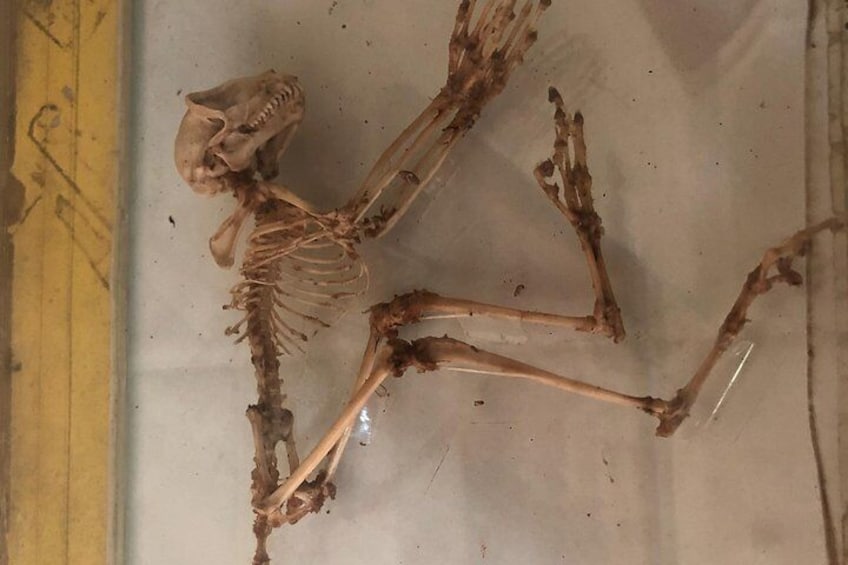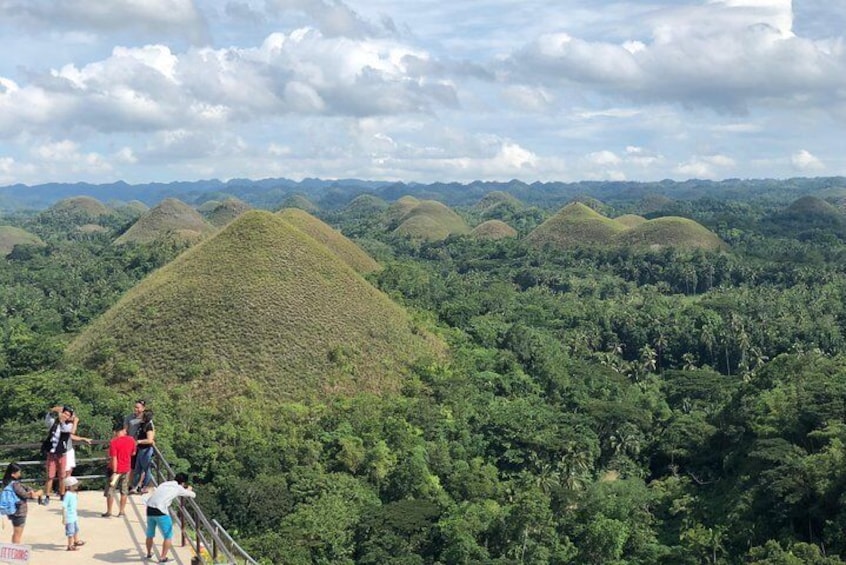Book your entire trip in one place, with free access to Mates Rates





11-Days in Philippines: Cebu-Bohol-Camiguin-Palawan-El Nido
Features
- 11d
- Mobile voucher
- Instant confirmation
- Selective hotel pickup
- Multiple languages
Overview
Explore the highlights of Philippines on this 11 Days Adventure. Fly to your city destinations with a Fast Ferries and Domestic flights. Visit the Chocolate Hills, Island Hopping, Whale Watching, Snorkling, Dolphins Watching, Longest Under ground River in the World, Hot Spring in Camiguin, Cold Springs and Water Falls and many more. The Philippines is defined by its emerald rice fields, teeming mega-cities, graffiti-splashed jeepneys, volcanoes, bug-eyed tarsiers, fuzzy water buffalo and smiling, happy people.
Explore the Islands of Cebu, Palawan, Bohol and Camiguin. So please ready your Cameras and Go Pro for best captured pictures as to visit the places of the Philippines.
Enjoy and lets Go!
Note:
- Cebu, Bohol and Camiguin is Private Tours while Palawan is Sharing Tours meaning Van is with other guests and the boat are with other guest too.
- Changes of Islands Sequence will depends upon the situations and the airline tickets you got. Suggestions is welcome.
Activity location
- Mactan-Cebu International Airport Authority (MCIAA)
- Lapu-Lapu Airport Road
- 6015, Lapu-Lapu City, Central Visayas, Philippines
Meeting/Redemption Point
- Mactan-Cebu International Airport Authority (MCIAA)
- Lapu-Lapu Airport Road
- 6015, Lapu-Lapu City, Central Visayas, Philippines
Check availability
No Rooms/ Just Tours
- 11d
- English
No Rooms / Just Tours
Pickup included
Budgeted Package
- 11d
- English
Accommodation + Cebu Tours + Bohol Tours + Camiguin Tours + Palawan Tour + Transfers + Breakfast + Ferry Tickets + Transfer (Airport/Seaport) + Lunch (Selected Days only) + Tour Guide + Driver + Boats
Pickup included
Mid-Range Package
- 11d
- English
Accommodation + Cebu Tours + Bohol Tours + Camiguin Tours + Palawan Tour + Transfers + Breakfast + Ferry Tickets + Transfer (Airport/Seaport) + Lunch (Selected Days only) + Tour Guide + Driver + Boats
Pickup included
High Range Package
- 11d
- English
Accommodation + Cebu Tours + Bohol Tours + Camiguin Tours + Palawan Tour + Transfers + Breakfast + Ferry Tickets + Transfer (Airport/Seaport) + Lunch (Selected Days only) + Tour Guide + Driver + Boats
Pickup included
What's included, what's not
- Tour Fees, Hotels, Airlines and Ferry Tickets, Vehicles Transport and more.
Know before you book
- Wheelchair accessible
- Public transport options are available nearby
- Suitable for all physical fitness levels
- Children must be accompanied by an adult
- May be operated by a multi-lingual guide
- Vegetarian option is available, please advise at time of booking if required
Activity itinerary
Day 1: Arrival in the Island of Cebu ( Mactan Cebu International Airport) or Sea Port
- 2 stops
- Meals: Not included
- Accommodation: Budgeted - Big Hotel, One Central Hotel Mid range - Marco Polo Plaza etc High Range or Hotel range - Radisson Blu, Seda
Mactan-Cebu International Airport Authority (MCIAA)
- 30m
Passenger Terminal 1, PIER 1
- 30m
Day 2: Oslob Whaleshark Encounter + Canyoneering + Kawasan Falls Day Tour
- 2 stops
- Meals: lunch, breakfast
- Accommodation: Budgeted - Big Hotel, One Central Hotel Mid range - Marco Polo Plaza etc High Range or Hotel range - Radisson Blu, Seda
Oslob Whale Shark Watching
- 5h
- Admission ticket included
Kawasan Falls
- 7h
- Admission ticket included
Day 3: Departure To Bohol / Cebu City Tour with Temple of Leah and Sirao Flower Farm
- 14 stops
- Meals: lunch, breakfast
- Accommodation: Budgeted - Big Hotel, One Central Hotel Mid range - Marco Polo Plaza etc High Range or Hotel range - Radisson Blu, Seda
Temple of Leah
- 30m
- Admission ticket included
Sirao Flower Garden
- 30m
- Admission ticket included
Shamrock Pasalubong Center
- 30m
- Admission ticket included
Basilica Minore del Sto. Nino de Cebu
- 30m
- Admission ticket included
Magellan's Cross
- 30m
- Admission ticket included
Fort San Pedro
- 30m
- Admission ticket included
Museo Sugbo
- 30m
- Admission ticket included
Taoist Temple
- 30m
- Admission ticket included
Taboan Public Market
- 30m
- Admission ticket included
Chapel of San Pedro Calungsod
- 30m
- Admission ticket included
Cebu Heritage Monument
- 30m
- Admission ticket included
Yap Sandiego Ancestral House
- 30m
- Admission ticket included
Passenger Terminal 1, PIER 1
- 30m
- Admission ticket included
Tagbilaran City Tourist Port
- 30m
- Admission ticket included
Day 4: Bohol Chocolate Hills Country Side Tour / Transfer to Panglao Island
- 10 stops
- Meals: lunch, breakfast
- Accommodation: Budgeted - Marilou Beach , Harmony Hotel Mid range - Bluewater Panglao High Range -Bellevue Resort, Amorita
Blood Compact Monument
- 30m
Baclayon Church Museum
- 30m
- Admission ticket included
Philippine Tarsier and Wildlife Sanctuary
- 40m
- Admission ticket included
Loboc River Cruise
- 2h
- Admission ticket included
Bilar Man-Made Forest
- 15m
Bohol Habitat Conservation Center
- 30m
- Admission ticket included
Chocolate Hills Natural Monument
- 30m
- Admission ticket included
Buenos Aires ATV Ride
- 1h
- Admission ticket not included
Bohol Python and Wildlife Park
- 30m
- Admission ticket included
Panglao Beach
- 30m
- Admission ticket included
Day 5: Island Hopping / Dolphin Watching
- 3 stops
- Meals: lunch, breakfast
- Accommodation: Budgeted - Marilou Beach , Harmony Hotel Mid range - Bluewater Panglao High Range -Bellevue Resort, Amorita
Balicasag Reef
- 15m
- Admission ticket not included
Virgin Island
- 20m
Isola di Francesco
- 15m
Day 6: Departure for Camiguin/ Arrival in Balbagon Port Camiguin
- 1 stop
- Meals: breakfast
- Accommodation: Budgeted - Bintana sa Paraiso Mid range - Camiguin Highland High Range - Balai sa Baibai, Nouveau Resort
Ardent Hot Springs
- 2h
- Admission ticket included
Day 7: Camiguin Countryside Tour and White Sand Island
- 7 stops
- Meals: lunch, breakfast
- Accommodation: Budgeted - Bintana sa Paraiso Mid range - Camiguin Highland High Range - Balai sa Baibai, Nouveau Resort
White Island
- 1h
- Admission ticket included
Katibawasan Falls
- 1h
- Admission ticket included
Walkway To The Old Volcano And Stations Of The Cross
- 1h
- Admission ticket included
Sunken Cemetery
- 30m
- Admission ticket included
Guiob Church Ruins
- 30m
- Admission ticket included
Sto. Nino Cold Spring
- 1h
- Admission ticket included
Soda Water Pool
- 1h
- Admission ticket included
Day 8: Departure from Camiguin/ Arrival in Puerto Princesa Palawan
- 1 stop
- Meals: breakfast
- Accommodation: Budgeted - Marianne Hotel Mid Range - Citystate Asturia Hotel High Range - Hue Hotels/ Princesa Garden Resort
Benoni Port
- 1h
Day 9: Underground River Tour / Transfer El Nido
- 1 stop
- Meals: lunch, breakfast
- Accommodation: Budgeted - Coral Cliff, Swiftlets Inn Mid range - El Nido Coco, El Nido Garden High Range - H. Hotel, Buko Beach Resort
Puerto Princesa Underground River
- 1h
- Admission ticket included
Day 10: El Nido Tour A Island Hopping / Back to Puerto Princessa
- 5 stops
- Meals: lunch, breakfast
- Accommodation: Budgeted - Marianne Hotel Mid Range - Citystate Asturia Hotel High Range - Hue Hotels/ Princesa Garden Resort
Big Lagoon
- 30m
- Admission ticket included
Secret Lagoon Beach
- 30m
- Admission ticket included
Shimizu Island
- 30m
- Admission ticket included
Seven Commando Beach
- 30m
- Admission ticket included
Small Lagoon
- 30m
- Admission ticket included
Day 11: Departure / Morning City Tour
- 7 stops
- Meals: breakfast
- Accommodation: Not included
Palawan Wildlife Rescue and Conservation Center
- 1h
- Admission ticket included
Mitra Farm
- 1h
- Admission ticket included
Baker's Hill
- 1h
- Admission ticket included
Binuatan Creations
- 1h
- Admission ticket included
Immaculate Conception Cathedral
- 1h
- Admission ticket included
Plaza Cuartel
- 1m
- Admission ticket included
Puerto Princesa City Baywalk Park
- 1h
- Admission ticket included
Location
Activity location
- Mactan-Cebu International Airport Authority (MCIAA)
- Lapu-Lapu Airport Road
- 6015, Lapu-Lapu City, Central Visayas, Philippines
Meeting/Redemption Point
- Mactan-Cebu International Airport Authority (MCIAA)
- Lapu-Lapu Airport Road
- 6015, Lapu-Lapu City, Central Visayas, Philippines